Treatment outcomes validate clinic's group-therapy approach
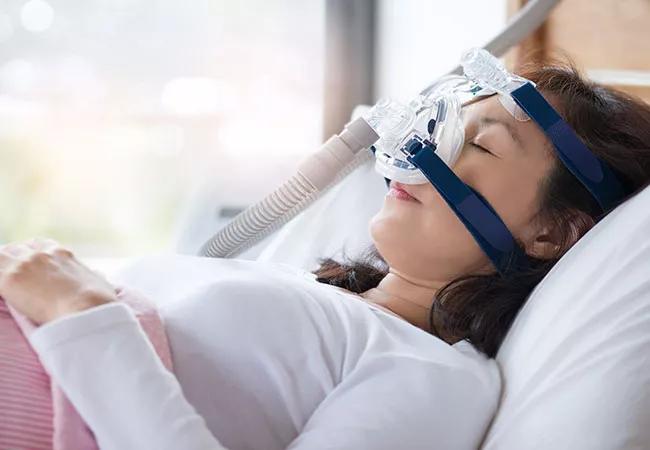
Positive airway pressure (PAP) therapy can save lives for patients with obstructive sleep apnea, but using the device can present real challenges. It may take months or longer for patients to learn to use their PAP machine comfortably, and successful use often entails considerable support from healthcare providers.
Advertisement
Cleveland Clinic is a non-profit academic medical center. Advertising on our site helps support our mission. We do not endorse non-Cleveland Clinic products or services. Policy
Cleveland Clinic’s Sleep Apnea Management (SAM) Clinic is dedicated to helping patients with sleep apnea achieve effective and consistent use of their PAP machine. The clinic uses an innovative approach that addresses PAP management issues in a group setting, with eight to 10 patients led by a physician or nurse practitioner. A durable medical equipment representative is available to individually address machine- or mask-related issues.
Outcomes data from 2015-2016 found that about one-half of patients who attended the SAM Clinic at least twice had clinically meaningful improvement in self-reported measures of depression, sleepiness and functional outcomes. Many also improved in physical and mental health scales.
Specific outcome measures of depressive symptoms and quality of life are detailed in the first bar graph below. They reveal:
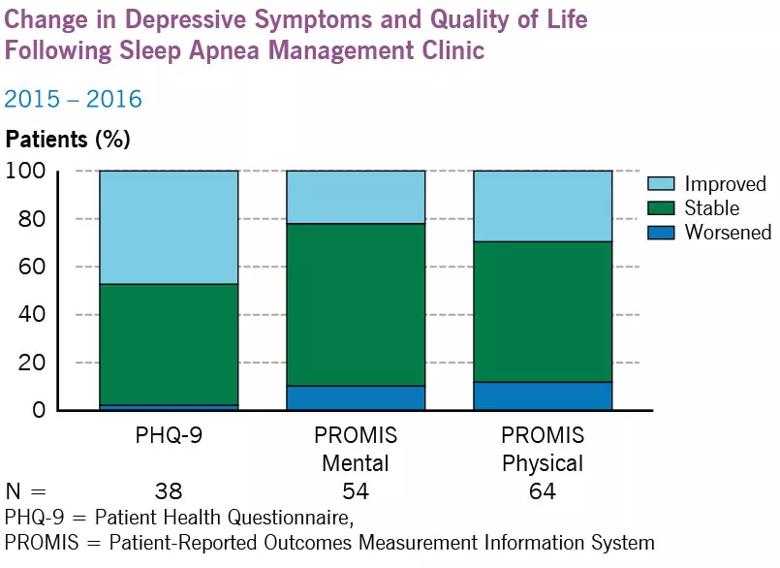
Changes in sleepiness and fatigue were also quantified for patients who had at least two visits to the SAM Clinic. Patients were evaluated with the Epworth Sleepiness Scale (ESS), the Functional Outcomes of Sleep Questionnaire (FOSQ) and the Fatigue Severity Scale. These scales ask patients to assess their level of sleepiness and fatigue and report on the impacts on their daily lives. The results reveal either clinically meaningful improvement or stable scores for almost all patients, as detailed in the graph below.
Advertisement
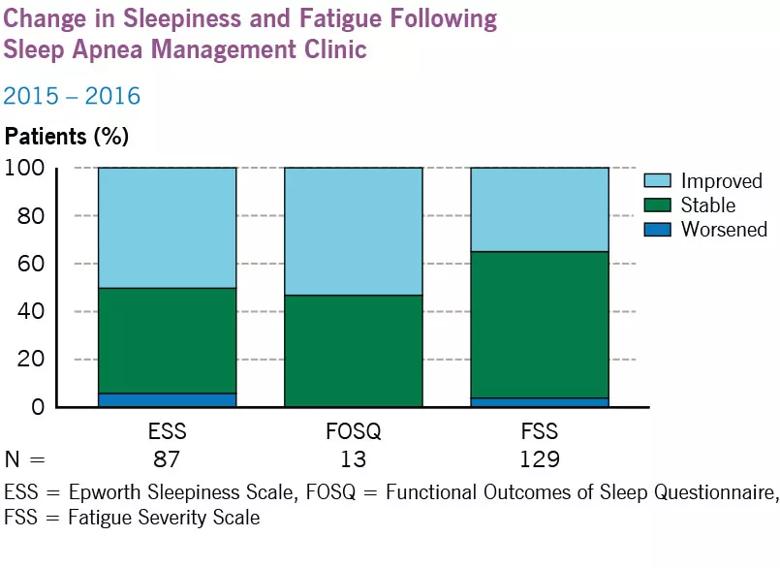
“The improvements are remarkable considering that many patients who come to the SAM Clinic have already been on PAP machines for some time,” says Harneet Walia, MD, a staff physician in Cleveland Clinic’s Sleep Disorders Center who oversees the SAM Clinic. “The gains made are beyond any improvements realized after first initiating therapy.”
The SAM Clinic was started about five years ago and is now offered at Cleveland Clinic’s main campus and multiple regional facilities. Dr. Walia notes that it is a novel clinic in that patients on PAP therapy are managed in a group setting.
Each session begins with a discussion of obstructive sleep apnea and the importance of PAP therapy. Patients have the opportunity to share stories and ideas and relate to others dealing with similar issues. Topics of discussion often go beyond the nuts and bolts of tolerating the PAP machine and touch on lifestyle issues such as PAP therapy while traveling and advice for how to maintain the therapy. Patients’ bed partners are encouraged to attend sessions as well.
After the group session, a Cleveland Clinic sleep physician or nurse practitioner spends time with each patient individually. The clinic is primarily designed to improve PAP therapy adherence by troubleshooting and addressing barriers, but it can also be used for annual checkups and to provide documentation of compliance required by CMS between one and three months after PAP therapy is started.
“PAP therapy requires persistent monitoring and problem solving,” observes Dr. Walia. “Not only does the SAM Clinic provide assistance with PAP machine use, but the group sessions increase patient motivation, which is very important.”
Advertisement
As the physician who spearheads studies of the SAM Clinic’s utility, Dr. Walia is now using additional patient-reported outcomes data to study the clinic’s effects on specific barriers to PAP therapy, including mask issues and feelings of claustrophobia.
“The outcomes data that Cleveland Clinic routinely collects on patients are invaluable to helping us fine-tune our programs,” she adds.
More outcomes data from Cleveland Clinic’s Neurological Institute are available in its 2016 Outcomes Book.
Advertisement
Advertisement

Favorable rates may stem from focus on outcomes monitoring
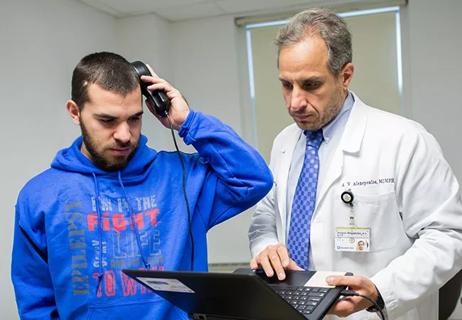
Nearly two-thirds of patients see clinically meaningful gains in large series

Insights from the first studies of HCAHPS data in this setting

Collaboration, institutionalizing best practices are central
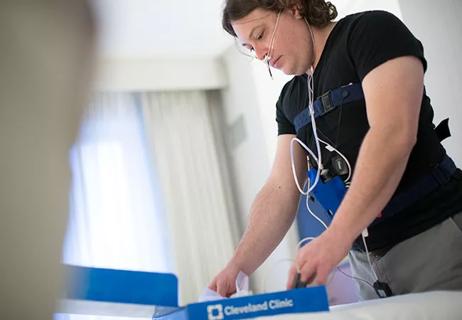
Outcomes outtakes ranging from home sleep testing to QoL effects
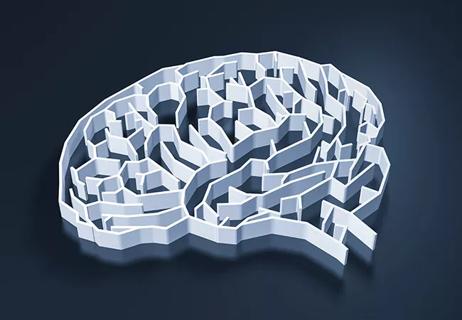
Diversifying the mix with intensive outpatient care, shared appointments

Most patients report relief from intractable spasms

Intensive program has multiple lasting benefits